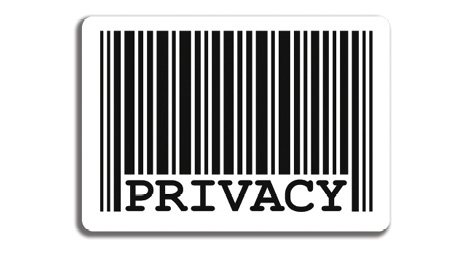Confessions of a Media Expert
Many dermatologists welcome the chance to be seen on TV, in the local newspaper, or featured online. Ahead, a media veteran offers tips to help you get the coverage you covet.
You’re harder to get hold of than (fill in blank)
Your receptionist acts like I’m a bill collector when I call, emails to info@doctorsoffice.com go unanswered, and your gatekeepers won’t give out your personal email or mobile number. By the time you actually respond to the voicemail I left at your office, it’s three days past the deadline. My most memorable experience was sending several emails to a prominent plastic surgeon about a study he published with no response. I called his office to follow up and his assistant said; “If Dr X wanted to be interviewed, he would have gotten back to you.” Really? Needless to say I never reached out to him again. The moral of this story is that if you want to be a go-to media resource, you have to try to be accessible.
It’s fine to arrange to call back at a suitable time, such as after you are finished seeing patients. But if the only time you are willing to talk is before 8 am, after 8 pm, or on weekends and holidays, you are probably not going to endear yourself to most media.
PRACTICAL POINTER
If you set up too many obstacles for writers and other media to work with you, the bottom line is that they are probably going to think twice before circling back to you the next time.
You Don’t Send Quality Photos
If you want to be interviewed about your results, being able to provide visuals comes with the territory. Suggesting that we pull something off your website is not going to fly. Similarly, sending over a PowerPoint deck you presented at a recent meeting is also less than ideal. Another common dilemma is sending over photos without captions at all, or with the actual patient’s name.
For print publications, images must be a minimum of 300dpi and meet the minimum requirements in terms of dimensions in pixels. For online outlets, lower resolution images may be acceptable. Each media outlet has a set protocol. If you make it harder to use your visuals, the simple fact is that they will not make it into the piece, and you may also find that your quotes are cut to make room for a more media-savvy doctor who provided good photos.
TIPS FOR BETTER INTERACTIONS WITH MEDIA: A SUMMARY

Make yourself accessible. Be sure staff “gatekeepers” aren’t so overzealous that you miss interview opportunities.

Provide good before and after images. For print publications, images must be a minimum of 300dpi.

Maintain patient privacy. Don’t use patient names on photo files or as captions.

Don’t over-edit or sanitize comments. Don’t add unnecessary comments when there may be space constraints.

Don’t just direct media to your website for answers. You are the resource that ought to be quoted.
You only talk about brands you have financial ties to without any disclosure
Most writers and reporters are looking for a physician’s expertise on a particular subject or product and are interested in writing a balanced feature that includes several points of view. While there is nothing inherently wrong with conducting clinical trials or being a consultant of speaker for companies and brands, full disclosure is becoming mandatory for more publications and programs. If asked if you have any disclosures, you are pretty much bound by answering truthfully. At best, an asterisk may be placed by your contributions or a notation may be included like, “Dr. Jones is a clinical investigator for XYZ.” At worst, your comments may end up getting cut, but that is less likely. Being upfront with journalists is always the best policy, and if they cannot use you for one feature, they are more inclined to keep you on their short list for the next one.
You refer me to your website to avoid taking the time to answer questions
Although I admit that conducting a personal interview is the best way to get to the most pithy quotes and sound bites, in the interest of time, it is not always possible. Therefore, email is the next best thing to the phone. I will never send a busy doctor more than a handful of key open-ended questions via email. If I don’t get what I need in the first exchange, I may go back for clarification. Telling me to look at your website instead of answering a direct question like; “How do you do it,” or “Who are the best candidates for that?” is not only not helpful, but I’m not going to go there. Frankly, before I reach out, you can rest assured that if I do not know you personally, I will have looked at your website. Similarly, if you have published an article on the topic in question, suggesting that I “Google it” or find it on PubMed is not so helpful. Surely your staff has access to articles you have published and can easily send over a link or a PDF.
You whitewash your quotes when I send them back for approval
This is not my first rodeo. On the contrary, I have written literally hundreds of articles, several chapters and numerous books in my own byline and for physicians. Although I am far from perfect, I do take pretty good notes. If I am not sure of something technical or clinical, I will do some research and come back to make sure I have it right. However, I am usually looking for comments that are not the typical party line or something straight out of a press release. I really want your opinion or your personal twist on the topic. Purely as a courtesy, I will send back quotes to be checked before filing my features.
If you are inclined to always change your quotes or add something that is not necessarily on point despite space constraints, or take out the best sound bite because you are concerned about your colleagues or industry, you should probably refrain from doing live interviews in general. Stick to email where you will have better luck controlling the message. If you do email responses, it is fine to skip a question you prefer not to answer. I don’t even mind if I get back incomplete sentences, but one-word answers like ‘yes’ or ‘no’ to questions that require some explanation are not going to cut it.
No Obstacles
In conclusion, we all have a job to do and some do it better than others. If you set up too many obstacles for writers and other media to work with you, the bottom line is that we are probably going to think twice before circling back to you the next time.

Wendy Lewis is President of Wendy Lewis & Co Ltd, Global Aesthetics Consultancy, the author of 11 books, and Founder/Editor-in-Chief of Beautyinthebag.com.
Ready to Claim Your Credits?
You have attempts to pass this post-test. Take your time and review carefully before submitting.
Good luck!





